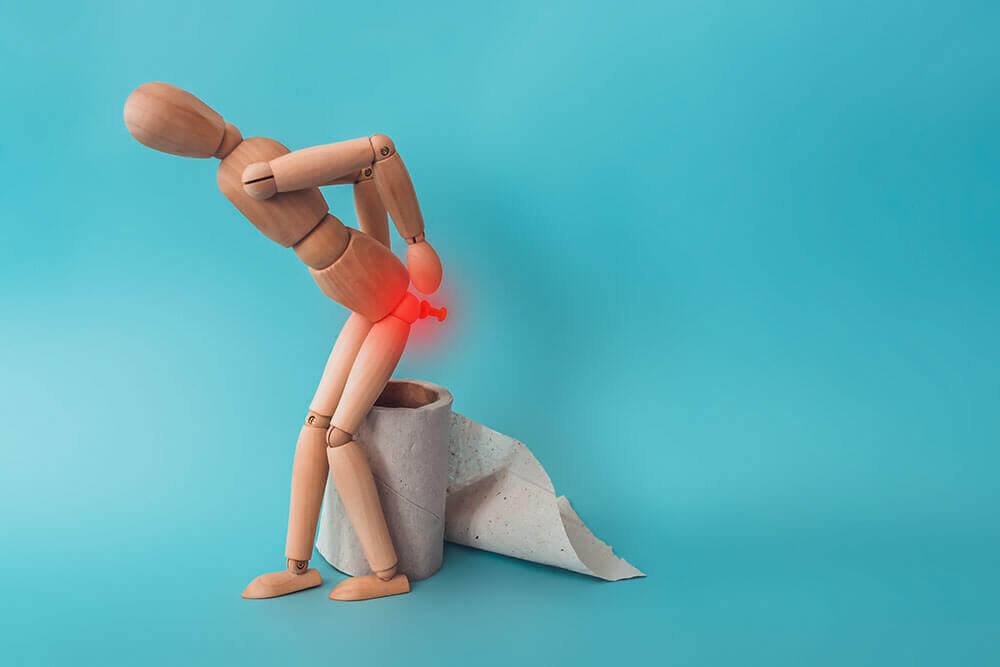
Sometimes after a bowel movement, you may discover a little blood in the toilet or after wiping. Doctors routinely test for blood in the stool too. When blood is present in stool, it indicates bleeding somewhere along the GI or gastrointestinal tract. Blood may occur anywhere along the GI tract and so there can be many causes.
How red is it?
If you noticed blood after a bowel movement, it’s probably bright red or maroon. Sometimes blood is darker. It may look black and more like tar. In this case, it probably came from the upper GI tract. Just a few drops of bright red blood are not necessarily a cause for concern. But dark or black blood may be. Sometimes blood in the stool is a symptom of a serious condition such as colon cancer. You should see a health care professional to get it checked out.
Hemorrhoids – the #1 Cause of Blood in the Stool
Hemorrhoids are a common condition that affects people of all ages. It’s the most common reason to find blood in the stool. Hemorrhoids can develop in response to many different things including:
- Constipation
- Frequent bowel movements
- Sitting on the toilet too long
- Sitting on a hard surface too long
- Pushing too hard to pass stool
- Pregnancy
In most cases, hemorrhoids are not serious and will heal on their own in a matter of a few days. If you continue seeing blood in your stool, the amount of blood increases or changes in any way – then you should consult a medical professional to rule out serious conditions.
Other Causes of Blood in the Stool
Polyps
Polyps are small growths in the intestinal tract lining. Some types of polyps develop into colorectal cancer or cancer of the rectum or colon. Polyps can be removed before they turn cancerous. And if they do progress to a form of cancer, they are easily treated if it’s caught early.
Inflammatory Bowel Disease or IBD
IBD is an autoimmune disease that affects the bowels. An autoimmune disease is when your immune system attacks part of the body. In this case, it causes inflammation and damage to the intestines. The two most common forms of IBD include ulcerative cancer and Crohn’s disease. Bloody stool is one of the most common symptoms of these conditions.
Anal Fissure
An anal fissure is a tear that occurs due to a large, firm stool that was hard to pass. They are common in those who suffer from constipation. Anal fissures are very common in infants, but adults and children can get them too. The blood from an anal fissure will be bright red. When the stool is hard and difficult to pass, it can cause the skin to stretch and crack. They are usually not serious and heal on their own. You can help prevent anal fissures by drinking more water and consuming foods high in fiber.
Diverticulitis
Diverticulitis is a common condition that develops when small food particles get trapped in small pouches that line the walls of both the small and large intestines. It can cause severe pain on the left side of the abdomen. It can also cause blood in the stool. It is treatable but can become serious if left untreated.
Call a Specialist!
If you have blood in the stool, it may be something common and nothing to worry about. But in some cases, it is a symptom of an underlying condition that needs immediate medical attention. Please schedule an appointment with a GI specialist to determine the source of blood in the stool. It may just prevent a condition from worsening.


